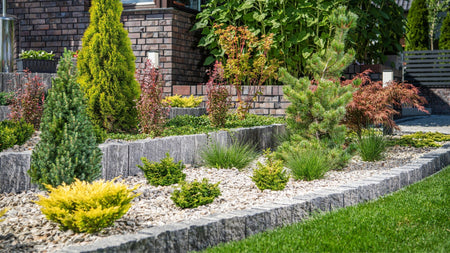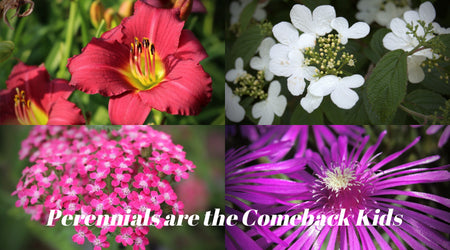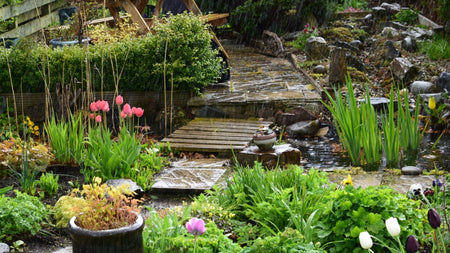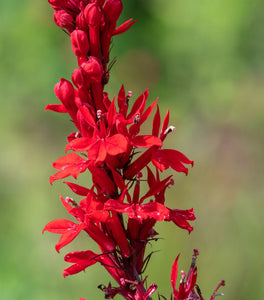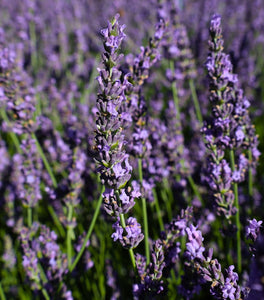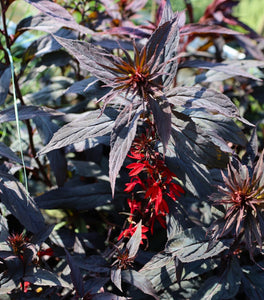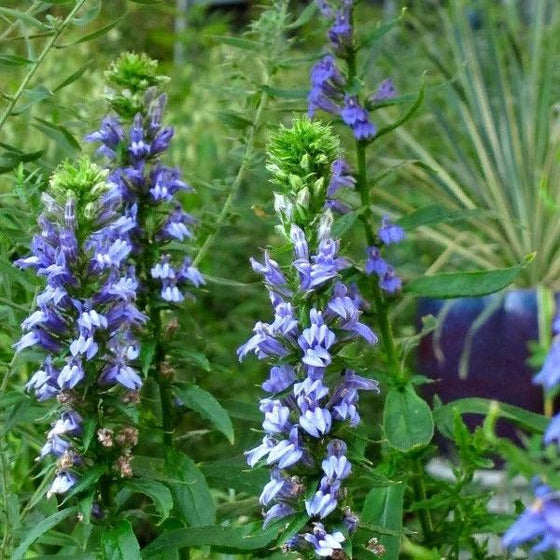
Images Depict Mature Plants
Great Blue Lobelia
Great Blue Lobelia (Lobelia siphilitica) is a stunning native perennial that brings vibrant blue color and vertical interest to late-summer landscapes. Known for its upright spikes of intense true-blue flowers, this hardy wildflower blooms from mid to late summer, attracting a wide variety of pollinators including bees, butterflies, and hummingbirds. Reaching a mature height of 2 to 3 feet, it makes an eye-catching statement in rain gardens, native plantings, and wetland edges.
This low-maintenance native thrives in moist, rich soil and tolerates full sun to partial shade, making it a versatile addition to a variety of garden settings. Great Blue Lobelia is especially effective in areas with consistent moisture, such as alongside ponds, in rain gardens, or in shaded woodland borders. Its bold blue blooms stand out beautifully against green foliage and provide a colorful contrast when paired with yellow or white-blooming natives like Rudbeckia or Chelone.
In addition to its ornamental beauty, Lobelia siphilitica is an ecologically valuable plant that supports local wildlife and enhances biodiversity. It is deer resistant, cold hardy, and ideal for naturalistic landscapes, pollinator pathways, and meadow-style gardens. Whether you're restoring native habitat or simply adding seasonal color to your garden, Great Blue Lobelia is a dependable and rewarding choice.
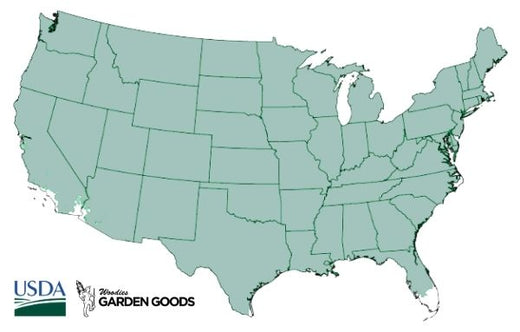
| Hardiness Zone: | 3-9 |
|---|---|
| Mature Height: | 2 to 3 Feet |
| Mature Width: | 1 to 2 Feet |
| Classification: | Flowering Perennial |
| Habit: | Upright |
| Flower Color: | Blue |
| Attracts: | Hummingbirds, Butterflies |
| Soil Condition: | Prefers moist soil; can tolerate mild flooding |
| Water Requirements: | Water frequently, do not let dry out |
How to Care for Great Blue Lobelia
Be sure to read our planting instructions to ensure a healthy and happy Great Blue Lobelia plant for years to come!
How Do I Plant Great Blue Lobelia Plants?
Planting Great Blue Lobelia (Lobelia siphilitica) begins with choosing the right location—this native perennial thrives in moist, rich soil and prefers full sun to partial shade. Ideal for rain gardens, pond edges, and low-lying areas, Great Blue Lobelia can also adapt to average garden soil as long as it's kept consistently moist. To plant, dig a hole slightly wider and as deep as the root ball, and gently place the plant so that the crown is level with the soil surface. Backfill with native soil or a mix enriched with compost, and water thoroughly to help settle the roots. Space plants 12 to 18 inches apart to allow for air circulation and room to grow, especially in groupings or mass plantings. Adding a light layer of mulch helps retain soil moisture and keeps weeds down, which is especially beneficial during establishment. Great Blue Lobelia is a perfect choice for naturalized plantings, pollinator gardens, and wetland restoration projects, where its brilliant blue flower spikes provide structure, color, and habitat value from mid to late summer. With proper planting and care, this native beauty will return year after year, increasing in size and attracting an abundance of beneficial wildlife.
How Do I Water Great Blue Lobelia Plants?
Watering Great Blue Lobelia plants properly is essential to keeping them healthy and blooming throughout the growing season. As a moisture-loving native perennial, Lobelia siphilitica prefers consistently moist to wet soil, especially during hot, dry weather or while the plant is becoming established. Water deeply two to three times per week during dry periods, making sure the soil doesn’t dry out completely. This is especially important if the plant is in full sun or located in raised beds or containers, where soil tends to dry faster. In rain gardens or naturally damp areas, Great Blue Lobelia often thrives with little supplemental watering, relying on rainfall or high water tables to meet its needs. In traditional garden beds or partially shaded borders, monitor soil moisture regularly and adjust your watering schedule accordingly. Applying a layer of mulch around the base of the plant helps retain soil moisture and reduce evaporation. By maintaining evenly moist conditions, your Great Blue Lobelia will produce towering spikes of brilliant blue flowers, creating a magnet for bees, butterflies, and hummingbirds in your landscape.
How Do I Fertilize Great Blue Lobelia Plants?
Fertilizing Great Blue Lobelia plants (Lobelia siphilitica) is simple and effective when done correctly. In early spring, apply a balanced, slow-release fertilizer such as 10-10-10 or 5-10-5 to support strong root development and encourage lush foliage and prolific blooms. If your soil is already rich in organic matter, a topdressing of compost may be all that's needed. Avoid over-fertilizing, as excessive nutrients can lead to lush leaves with fewer flower spikes. Always water after fertilizing to help nutrients penetrate the soil and reach the root zone. For plants grown in containers, rain gardens, or areas with poor soil, a light midseason feeding can help sustain blooming into late summer. Use a diluted liquid fertilizer every 4–6 weeks during the growing season if needed, particularly in well-drained areas where nutrients may leach quickly. With just modest feeding, Great Blue Lobelia will reward you with tall spires of brilliant blue flowers that attract bees, butterflies, and hummingbirds, adding beauty and ecological value to your garden or native planting.

How and When Should I Prune Great Blue Lobelia Plants?
Pruning Great Blue Lobelia (Lobelia siphilitica) is a simple but effective way to keep the plant looking tidy and to encourage healthy growth. After the plant finishes blooming in late summer or early fall, cut back the spent flower stalks to just above the basal foliage to prevent self-seeding and redirect the plant's energy into root development. This not only keeps the garden looking neat but also helps the plant prepare for winter dormancy. Be sure to remove any yellowing or damaged leaves at this time as well, which can help reduce the risk of disease. In early spring, before new growth appears, do a hard cutback of any remaining dead foliage to clear space for the new season’s shoots. This is also a good time to apply compost or a balanced fertilizer to support healthy regrowth. While Great Blue Lobelia is a low-maintenance native plant, regular pruning encourages a more compact habit and prevents it from becoming too leggy. Pruning also makes this moisture-loving perennial a more attractive focal point in rain gardens, native borders, or wetland plantings as it continues to attract pollinators year after year.













